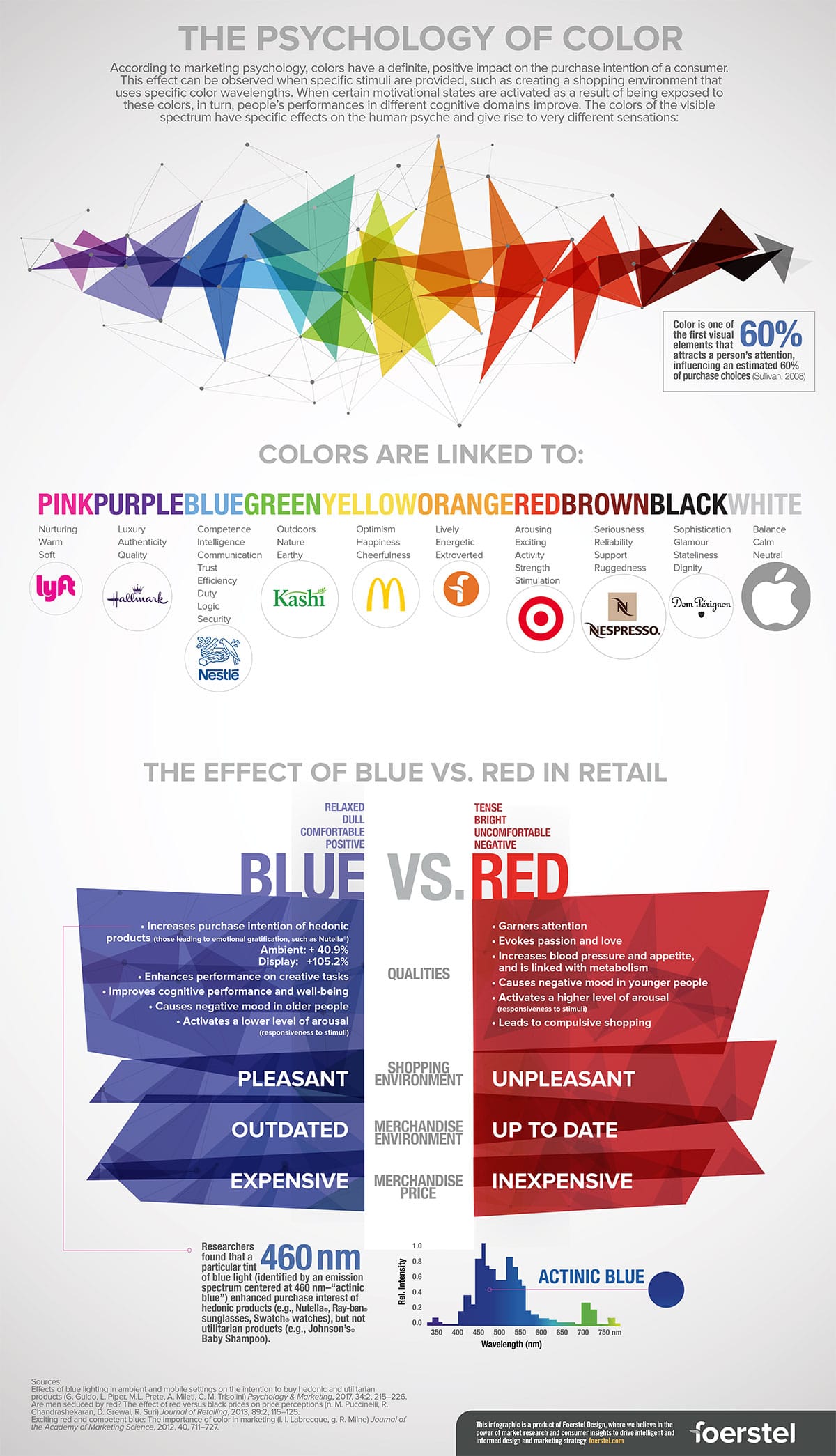According to marketing psychology, colors have a definite, positive impact on the purchase intention of a consumer.
This effect can be observed when specific stimuli are provided, such as creating a shopping environment that
uses specific color wavelengths. When certain motivational states are activated as a result of being exposed to these colors, in turn, people’s performances in different cognitive domains improve. The colors of the visible spectrum have specific effects on the human psyche and give rise to very different sensations:
COLORS ARE LINKED TO:
PINK
Nurturing
Warm
Soft
PURPLE
Luxury
Authenticity
Quality
BLUE
Competence
Intelligence
Communication
Trust
Eciency
Duty
Logic
Security
GREEN
Outdoors
Nature
Earthy
YELLOW
Optimism
Happiness
Cheerfulness
ORANGE
Lively
Energetic
Extroverted
RED
Arousing
Exciting
Activity
Strength
Stimulation
BROWN
Seriousness
Reliability
Support
Ruggedness
BLACK
Sophistication
Glamour
Stateliness
Dignity
WHITE
Balance
Calm
Neutral
THE EFFECT OF BLUE VS. RED IN RETAIL
BLUE
QUALITIES
• Increases purchase intention of hedonic
products (those leading to emotional gratification, such as Nutella®)
Ambient: + 40.9%
Display: +105.2%
• Enhances performance on creative tasks
• Improves cognitive performance and well-being
• Causes negative mood in older people
• Activates a lower level of arousal
(responsiveness to stimuli)
PLEASANT SHOPPING ENVIRONMENT
OUTDATED MERCHANDISE ENVIRONMENT
EXPENSIVE MERCHANDISE PRICE
RED
QUALITIES
• Garners attention
• Evokes passion and love
• Increases blood pressure and appetite,
and is linked with metabolism
• Causes negative mood in younger people
• Activates a higher level of arousal
(responsiveness to stimuli)
• Leads to compulsive shopping
UNPLEASANT SHOPPING ENVIRONMENT
UP TO DATE MERCHANDISE ENVIRONMENT
INEXPENSIVE MERCHANDISE PRICE
Researchers found that a particular tint of blue light (identified by an emission spectrum centered at 460 nm–“actinic blue”) enhanced purchase interest of hedonic products (e.g., Nutella®, Ray-ban® sunglasses, Swatch® watches), but not utilitarian products (e.g., Johnson’s® Baby Shampoo).
Sources: Eects of blue lighting in ambient and mobile settings on the intention to buy hedonic and utilitarian products (G. Guido, L. Piper, M.L. Prete, A. Mileti, C. M. Trisolini) Psychology & Marketing, 2017, 34:2, 215–226. Are men seduced by red? The eect of red versus black prices on price perceptions (n. M. Puccinelli, R. Chandrashekaran, D. Grewal, R. Suri) Journal of Retailing, 2013, 89:2, 115–125. Exciting red and competent blue: The importance of color in marketing (l. I. Labrecque, g. R. Milne) Journal of the Academy of Marketing Science, 2012, 40, 711–727.
